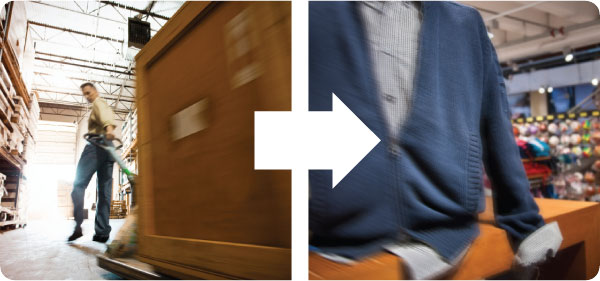How to Develop a Direct-to-Store Delivery Model

Is a Direct-to-Store Delivery Model Right for You?
Speed is the name of the game in today’s retail landscape. How quickly products are purchased from store shelves depends on a myriad of factors: consumer preference, special promotions, and brand recognition, to name just a few. The real trick to gaining speed and increasing your inventory turns is to ensure you have a successful and cost-efficient replenishment system.
Over the last few years, many consumer goods manufacturers are increasingly using a Direct-to-Store Delivery (DSD) delivery model as an alternative to traditional wholesaler and distributor networks. A DSD model establishes a “closed loop” network from the consumer good manufacturer’s warehouse to various retail outlets, making multiple stops before returning to the point of origin.
Below are a few tips for setting up a Direct-to-Store Delivery model for your business:
Create the Demand Profile. Perhaps the most critical element to setting up a DSD model is understanding who your retailers are, and what their demand (i.e., order volume) looks like.
Routing Deliveries. Once the right mechanisms are in place to capture the daily demand profile, the optimal route for each day’s delivery can be mapped. The route plan should take into consideration such variables as traffic patterns, speed limits, distance and time calculations, and driver Hours of Service.
Loss Prevention. Because DSD involves multiple stops at retailer locations, building in processes to prevent and monitor product theft is a very important consideration. In addition to GPS and security cameras, training drivers on how to identify suspicious behavior is paramount.
Capturing Proof of Delivery. A variety of new technologies enable electronic proof of delivery, primarily using handheld devices. This has an incredible impact on Order-to-Cash cycle time, reducing it to a matter of hours.
Continuous Improvement. Using information captured through the demand profile, route designs, and delivery information, you can set a baseline for performance. With the baseline as your starting point, you can measure the effectiveness of incremental and ongoing improvements to the network, through cost savings and increases in efficiency.
Is a Direct-to-Store Delivery Model Right for You?
If your products and supply chain have the following requirements, you may be a good candidate for this model:
- Control of the deliveries is very important. For example, delivery windows are tight or limited to certain times of the day.
- A large portion of your customer base consists of small retailers, like convenience stores, where store rooms are typically small, cannot store excess inventory, and require frequent replenishment.
- Direct contact with retailers is a critical element to customer satisfaction, and therefore, drivers making the delivery broker the retailer relationship.
- If goods are not on shelves, you lose a sale and, consequently, market share. Using the example of soft drinks, if one soft drink brand’s products are not on retailer shelves but the competitive brands are, then the consumer will buy the competitive brand as his/her second choice.
- Security or product theft is an issue, especially in the case of high-value goods such as tobacco, alcohol, and jewelry.
